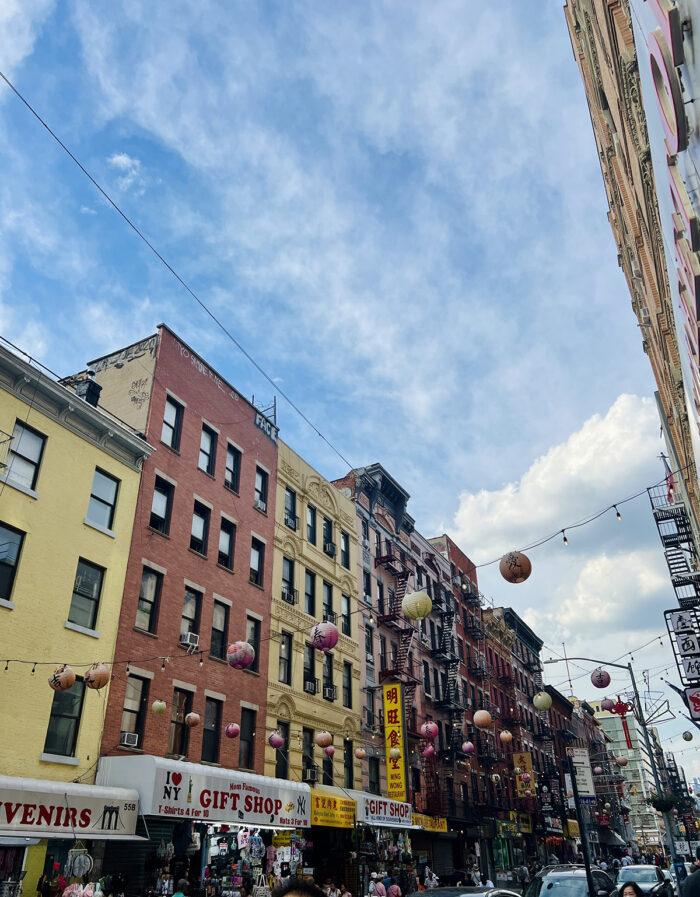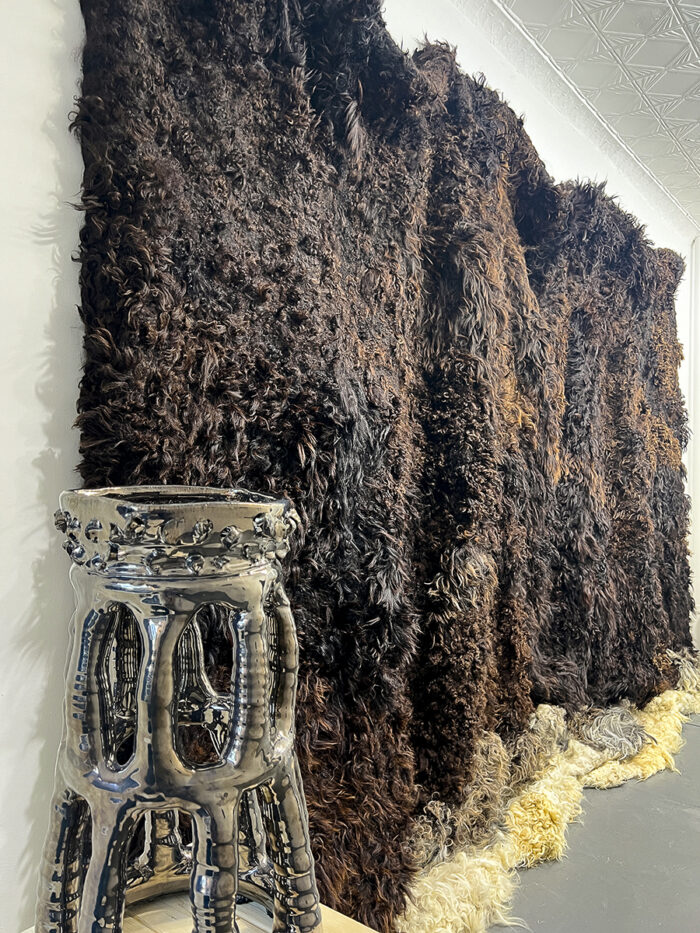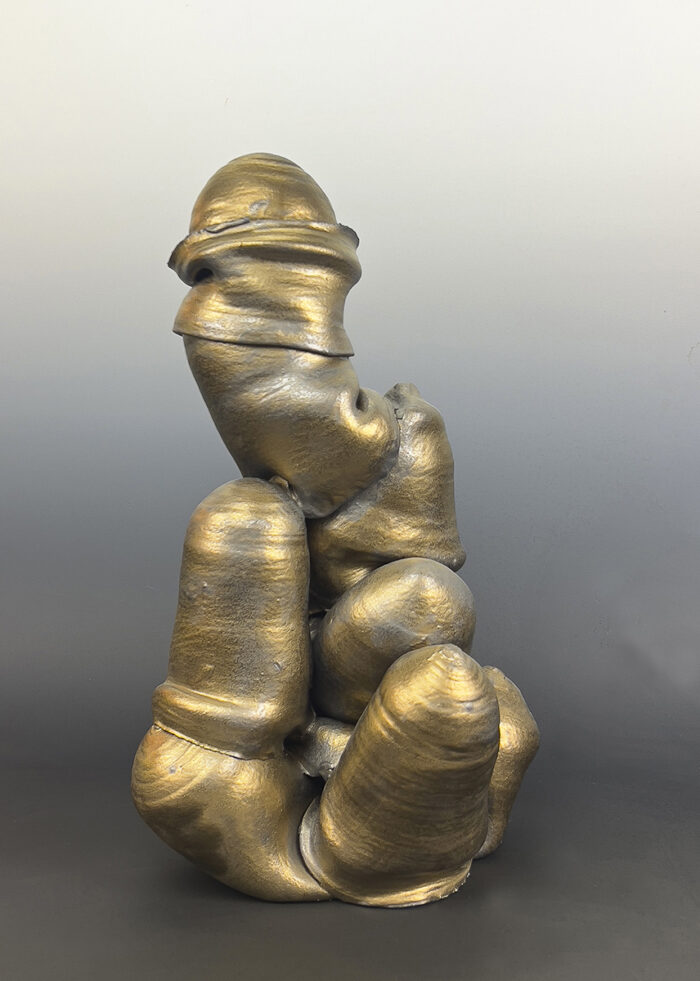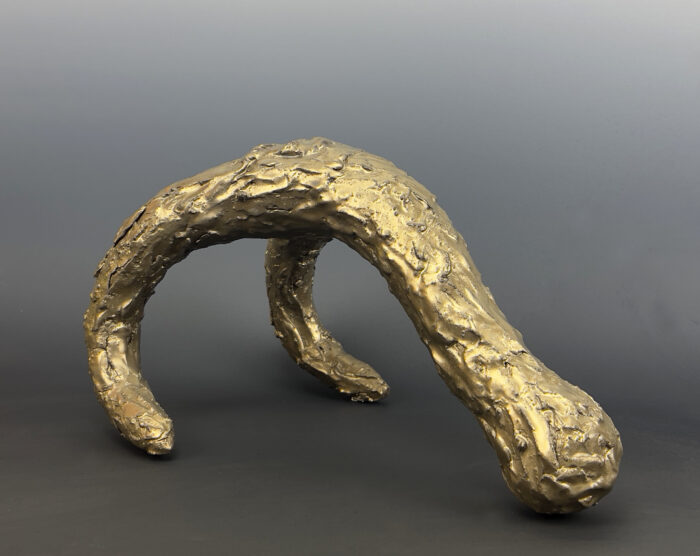 Tucked in a corner of Chinatown’s chaos is an oasis that transports you to the mountains, one soft artwork at a time. When I walked into KAPOW Gallery, I wasn’t sure what to expect: huge woolen canvases and metallic-looking sculptures, which I later found were all ceramic. The vibe of Váradi—Fulop was about redefining ancient history and preservation through recreation.
Tucked in a corner of Chinatown’s chaos is an oasis that transports you to the mountains, one soft artwork at a time. When I walked into KAPOW Gallery, I wasn’t sure what to expect: huge woolen canvases and metallic-looking sculptures, which I later found were all ceramic. The vibe of Váradi—Fulop was about redefining ancient history and preservation through recreation.
The vast, soft, furry installation, as is the story of its artist, Brigitta Váradi, is hard to miss. She started her journey with a simple need to connect to her roots through the craft of felting. “I was just drawn to the wool, and the first time I touched it, I felt electricity,” Brigitta said in an exclusive, unexpected interview.
Kourosh Mahboubian, the gallery owner, adds to the mystery. “Ask yourself, why do you do what you do? The answer lies there,” he says, discussing the artwork’s relevance. Deep-diving into her work—quite literally, as one touches the fleece of her most prominent work on display, “With Their Backs to the Mountains, 2024″—one marvels not just at the skill behind the visual story but also at the reasons why the artist did it in the first place.

The work invites me to wrap myself in it, perhaps a testament to why the artist made it—rooted in caregiving and speaking through and for the sheep and her grandmother’s heritage working with sheep. “It took me a lifetime to discover my heritage and why I was drawn to felting, and the wool helped me find that out.”
The artist spent years teaching in Ireland, even volunteering at prisons to teach her skills in Glasgow before she got her first show in Compton in 1998 and residency in 2005. It was through the process of giving out her art for free, and this gifted her the life of an artist.
“Craft is a great connector between people,” she says.
Peter Fulop’s ceramic collection screams craft. At first glance, his works look like metalwork, contrasting with Brigitta’s natural vibe. This is the artistic inquiry of the collection, as reading the description reveals that his work is as connected to nature as Brigitta’s. Each piece is a balancing act from Earth, connected to questioning reality. The artist himself sees his work as an opposition to inherited reality. I can observe his years in monasteries honing his skill to allow such a beautiful deception.

The intuitive thought behind perception makes me see a Ganesh figurine in the middle of the hall. Accumulate (2024) speaks to the artist’s intention of not having one in the first place. The golden hue and the uncomplicated pieces fitting together into a shape bring my mind to my own culture, and without even reading the description, I have a connection to the work already.
The unassuming cone-like ceramic structure placed atop a wool-covered stand perfectly marries the two works, giving motherhood a visual structure and resembling sheep udders while remaining true to each artist’s distinctive style.

The giant appendix-looking figure Bonded (2024) lay unassumingly on the floor – resembling sheep horns and, not surprisingly, ‘bonding’ with Brigitta’s artwork. There is a symbiotic chemistry between both works while being entirely different. This is why, I believe, visitors, even those from other cultures, might feel a connection to their roots through these pieces. The exhibition creates a universal resonance that transcends cultural boundaries, driven by the respectful approach of the artists’ storytelling.
Each piece in the exhibition invites contemplation and introspection, encouraging visitors to reflect on their heritage and connections. Brigitta’s woolen works’ tactile experience and Fulup’s ceramics’ visual deception offer a multi-sensory journey that resonates profoundly. The careful curation and placement of the artworks enhance this journey, creating a narrative that unfolds with each step through the gallery. This proximity to the work helps the visitor be a part of the narrative rather than an observer.
Brigitta Váradi and Peter Fulup have created a space where visitors can deeply, personally, and meaningfully explore these themes. Their works remind us that, no matter where we come from, we all share a common heritage and a desire to connect with something greater than ourselves.
VARÁDI – FULOP
BRIGITTA VÁRADI AND PETER FULOP
KAPOW Gallery
June 20th – July 13th, 2024
Article by Ambika Sharma








